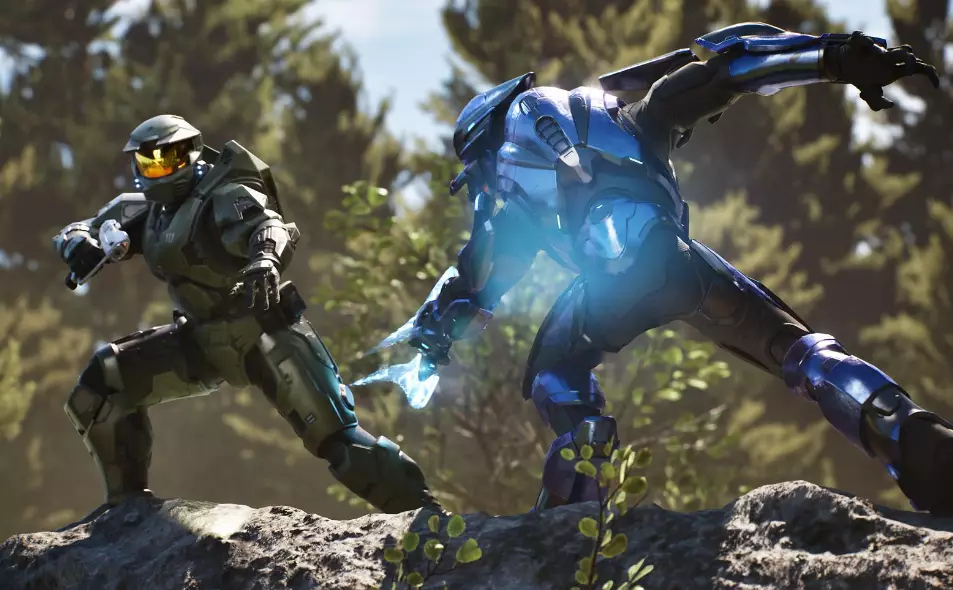Prime Video’s latest anthology series, Secret Level, premiered in December to a mix of anticipation and skepticism from fans of video games and television alike. The series attempts to weave together stories inspired by a variety of video game franchises, showcasing the potential of video games in narrative storytelling. However, notable absences have surfaced, most prominently the absence of iconic franchises such as Halo and Doom. Despite efforts from the creators, securing these high-profile franchises proved to be a significant hurdle.
In conversations with supervising director Dave Wilson and creator Tim Miller, it becomes clear that their ambitions were met with roadblocks when it came to acquiring rights for these beloved characters. While the creative minds behind Secret Level were eager to craft an episode that showcased the legendary Master Chief and the notorious Doom Slayer, negotiations with Microsoft faltered. The hurdles encountered reflect a larger issue within the entertainment industry: the complexity of rights management and existing corporate agreements can overshadow creative pursuits.
Wilson elaborates on the challenges faced by the Secret Level team, revealing that some decision-makers within the industry were hesitant to embrace a new idea they perceived as potentially disruptive. According to Wilson, comments from development executives included concerns about how a project like Secret Level might interfere with pre-existing deals. This apprehension highlights a critical issue that often stymies innovative projects: the fear of change.
Miller addressed the misconceptions that arose in the aftermath of the show’s release, particularly regarding the creative team’s supposed oversight in not securing Halo. Their attempts were met with silence from Microsoft, leaving fans bewildered about the missed opportunities. The online backlash questioning the choice to feature lesser-known franchises over heavyweights like Halo or Doom is understandable; however, it overlooks the complex nature of negotiations and corporate politics that often govern such decisions.
The ambition to bring Master Chief and the Doom Slayer together for a special episode encapsulates the internal struggle faced by Wilson and Miller. The duo dedicated an entire weekend to draft an earnest letter to Microsoft, vehemently advocating for a collaboration. Their friendship with individuals at Microsoft and id Software could have served as a bridge, yet ultimately, it did not yield the desire outcome. This scenario paints a vivid image of creative spirits yearning to tell stories that resonate with gamers but falling prey to the intricacies of corporate negotiations.
As the series navigated these challenges, they still found success in featuring lesser-known titles like The Outer Worlds, developed by Obsidian. Conversely, the absence of more recognizable properties from other major gaming companies—such as Nintendo—further emphasizes the unpredictable landscape of rights acquisition. The affable enthusiasm of Wilson and Miller contrasts sharply with the cold realities imposed by corporate agreements.
Miller notes that while the creative team pursued notable gaming intellectual properties, many were caught up in the chaotic whirlwind of Hollywood, leaving potential collaborations in limbo. This reflects a broader trend where even the most promising projects can fade away into obscurity, stifled by the complexities of the industry. The anticipation surrounding these potential collaborations only deepens the frustration when fans hear that little to no progress was made.
Reviews of the first season of Secret Level evoke mixed feelings from both critics and fans alike. Although some episodes captured the essence of gaming culture effectively, others felt lackluster. The series is far from a total failure, and with Season 2 in the works, there lies a glimmer of hope for both creators and audiences. However, with an ever-changing landscape of intellectual properties, the question remains: which video game franchises will rise to the occasion in the sequel, and will the Secret Level team be able to navigate the complexities of securing them?
In the world of adaptation, the journey from concept to screen is fraught with challenges but also ripe with opportunities. Whether Secret Level can ultimately evolve into a powerhouse of video game storytelling will largely depend on its ability to overcome its corporate challenges and harness the passions of its creators. As gaming continues to evolve, so too does the potential for compelling adaptations that resonate with audiences around the globe.

